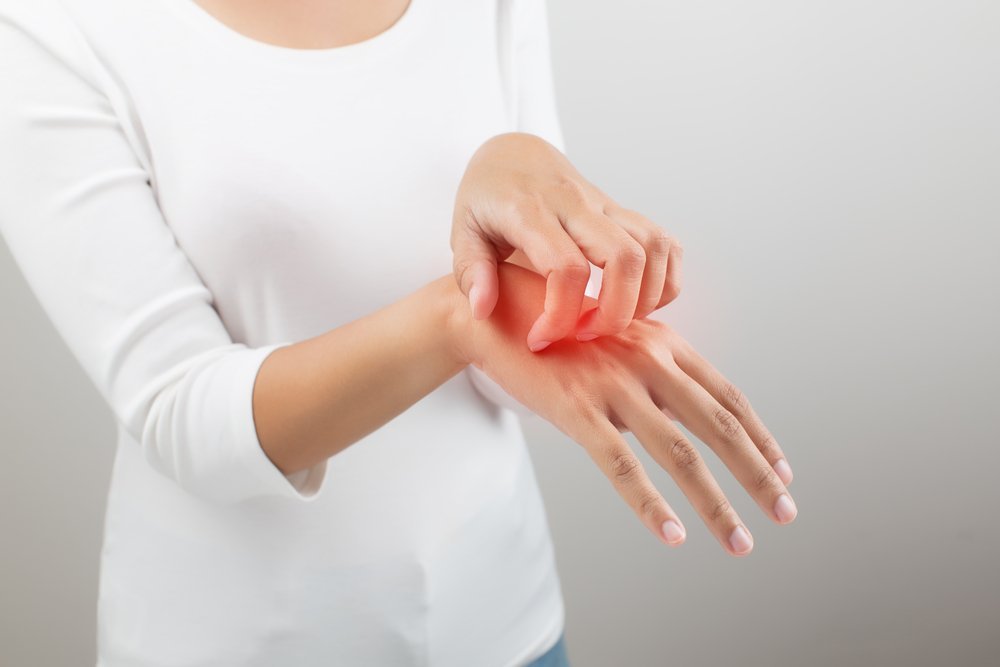Introduction
Itchy skin, or pruritus, is an unpleasant sensation that causes the need to scratch the skin.Although itching is most often a symptom of various diseases, in some cases it can act as an independent condition known as idiopathic pruritus. This condition is characterized by the absence of visible skin changes and can significantly reduce the quality of life of patients.
Causes of chronic pruritus without visible skin lesions
- Neurological factorsDisturbances in the nervous system can lead to itching. Damage to peripheral nerves, such as in diabetic neuropathy, or diseases of the central nervous system, such as multiple sclerosis, can cause chronic itching without visible changes in the skin.
- Dermatologic CausesSome skin conditions can manifest with itching without obvious rashes. For example, senile pruritus (senile pruritus) is common in the elderly and is associated with age-related skin changes such as dryness and decreased sebaceous gland function.
- Systemic diseasesChronic pruritus can be a symptom of various systemic diseases such as chronic kidney failure, liver disease, diabetes mellitus and hyperthyroidism. In these cases, itching occurs due to the accumulation of toxic substances in the body or metabolic disorders.
- Psychosomatic causesPsychological factors such as stress, anxiety and depression can contribute to itching. Psychogenic itching often intensifies during periods of emotional stress and may not be accompanied by visible changes in the skin.
Diagnosis and criteria for independent disease
Diagnosis of idiopathic itching is a difficult task, since it is necessary to exclude many possible causes. The doctor conducts a thorough collection of anamnesis, examines the skin and prescribes a number of laboratory and instrumental studies to exclude systemic diseases, allergic reactions and other pathologies. These studies include general and biochemical blood tests, urinalysis, ultrasound examination of internal organs and, if necessary, consultations of narrow specialists.
Differential diagnosis is carried out with allergic reactions, infectious skin diseases, parasitic infestations and other conditions that can cause itching. The absence of visible skin changes and negative results of laboratory tests may indicate in favor of idiopathic pruritus.
Treatment methods and modern approaches
- Drug therapy
- Antihistamines: prescribed to reduce the intensity of itching, especially if an allergic component is suspected.
- Neuromodulators: drugs such as gabapentin or pregabalin may be effective for neuropathic pruritus associated with nerve fiber damage.
- Antidepressants: tricyclic antidepressants or selective serotonin reuptake inhibitors may be used for psychogenic pruritus.
- Non-medicamentous methods
- Psychotherapy: cognitive behavioral therapy can help patients cope with psychogenic itching by teaching them techniques to manage stress and anxiety.
- Physical therapy: techniques such as ultraviolet therapy can be effective for some forms of itching.
- Lifestyle and prevention
- Moisturizing the skin: regular use of moisturizers helps prevent dry skin, which can exacerbate itching.
- Avoiding irritants: it is recommended to avoid contact with substances that can irritate the skin, such as harsh detergents or synthetic fabrics.
- Stress management: relaxation practices such as yoga or meditation can help to reduce stress levels and therefore reduce the manifestations of psychogenic itching.
Conclusion
Timely diagnosis and treatment of idiopathic pruritus are important to improve patients’ quality of life and prevent possible complications such as sleep disturbances, depression or skin damage due to constant scratching. Patients are advised to consult a dermatologist at the onset of chronic pruritus without visible skin changes for a comprehensive examination and individualized treatment regimen.
Recommendations for patients
- Do not self-medicate; consult a physician for accurate diagnosis.
- Follow skin care recommendations and avoid factors that may aggravate itching.
- Keep a symptom diary, noting possible triggers of itching, which will help your doctor in making a diagnosis.
Remember, a comprehensive approach to treatment and collaboration with medical professionals are key to successfully managing idiopathic itching.
